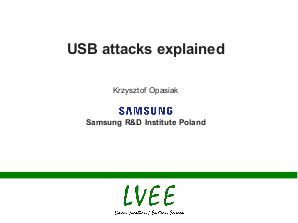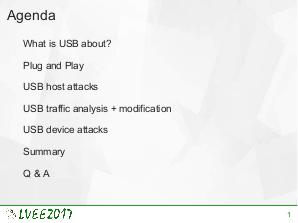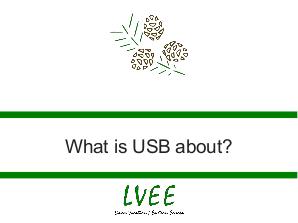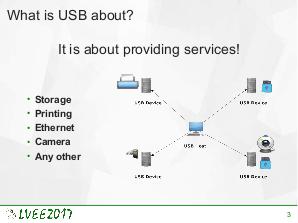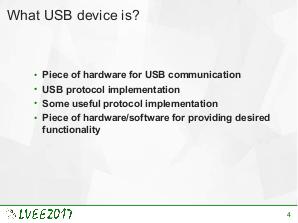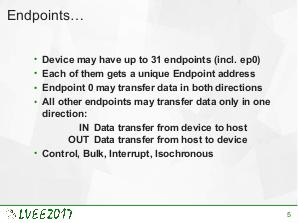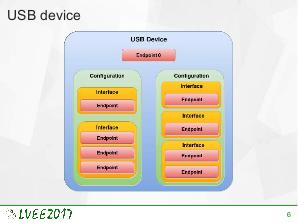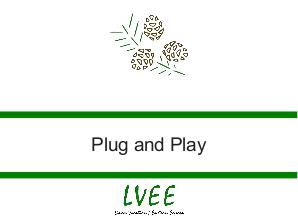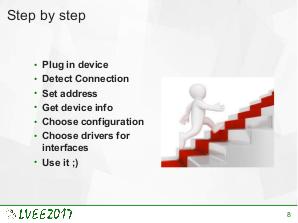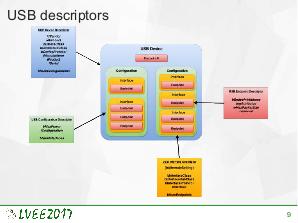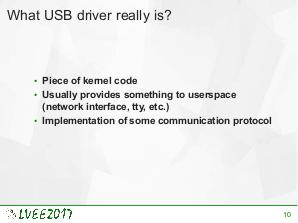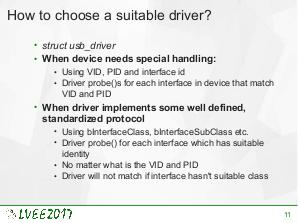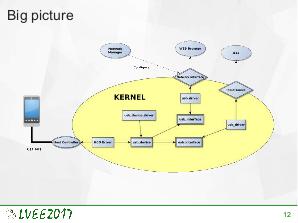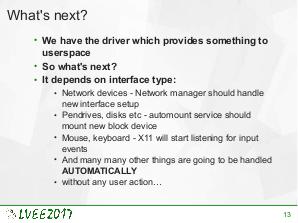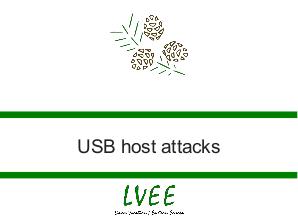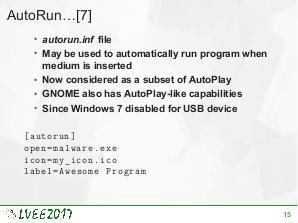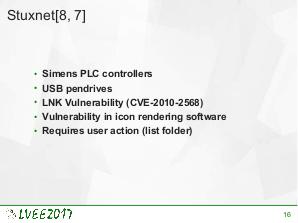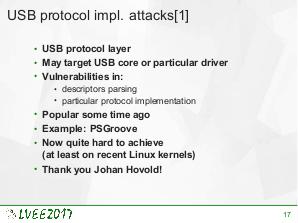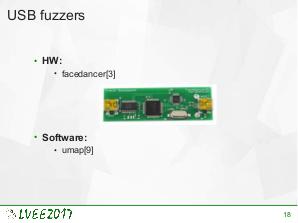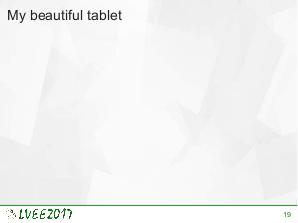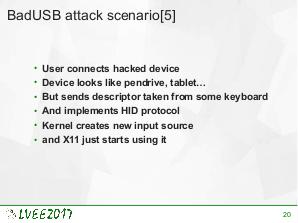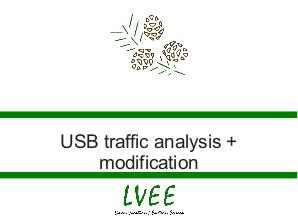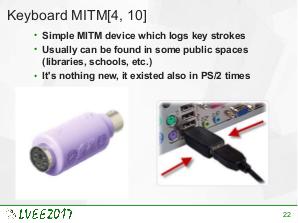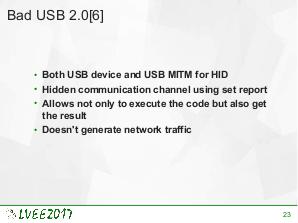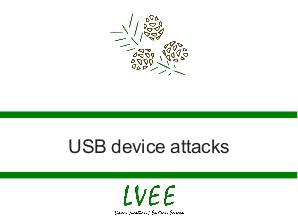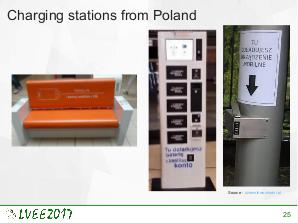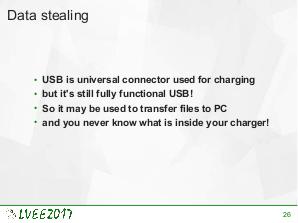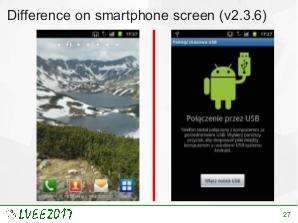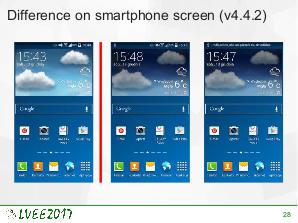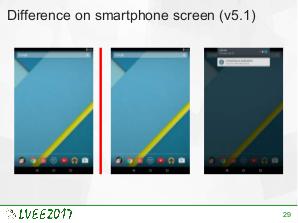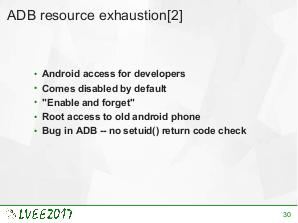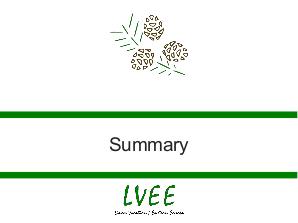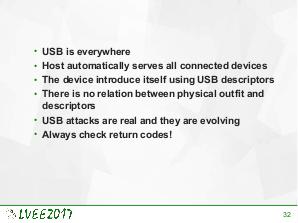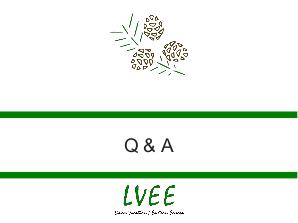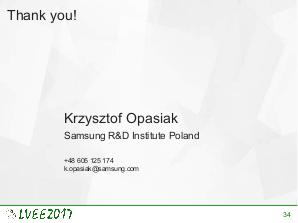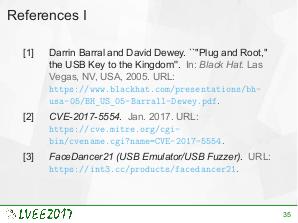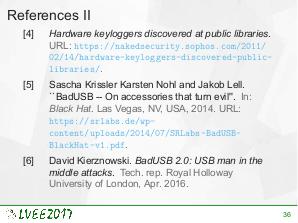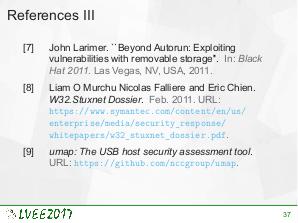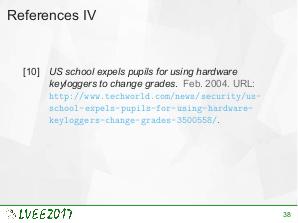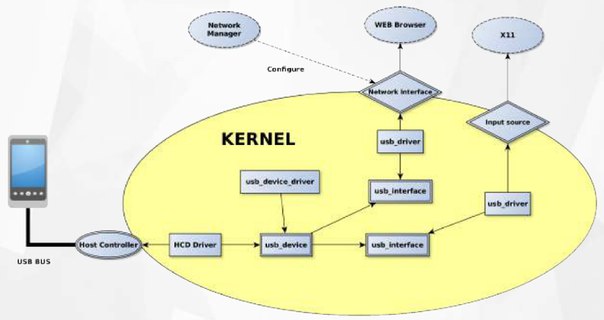USB attacks explained (Krzysztof Opasiak, LVEE-2017) — различия между версиями
Материал из 0x1.tv
StasFomin (обсуждение | вклад) |
StasFomin (обсуждение | вклад) |
||
| (не показано 11 промежуточных версий этого же участника) | |||
;{{SpeakerInfo}}: {{Speaker|Krzysztof Opasiak}}
<blockquote>
USB is the most common external interface in the world. Even machines which, for security reasons, are disconnected from the Internet often offer USB connectivity. This creates a new attacks surface for skilled hackers. USB implementation may be exploited on various levels. To effectively protect against such attack, knowledge about already exploited vulnerabilities is required. This paper is a survey of state-of-the-art USB-related attacks.
</blockquote>
{{VideoSection}}
{{vimeoembed|223913380|800|450}}
{{youtubelink|hjaVq3w_Tus}}{{letscomment}}
{{SlidesSection}}
[[File:USB attacks explained (Krzysztof Opasiak, LVEE-2017).pdf|left|page=-|300px]]
{{----}}
== Thesis ==
{{LinksSection}}
* [https://lvee.org/ru/abstracts/243 Talks page]
<!-- <blockquote>[©]</blockquote> -->
{{fblink|1933723420214003}}
{{vklink|711}}
<references/>
[[File:{{#setmainimage:USB attacks explained (Krzysztof Opasiak, LVEE-2017)!.jpg}}|center|640px]]
{{stats|disqus_comments=0|refresh_time=2019-12-30T16:17:392021-08-31T16:40:04.612353112631|vimeo_comments=0|vimeo_plays=435|youtube_comments=0|youtube_plays=4971}}
[[Категория:Linux]]
[[Категория:LVEE-2017]]
[[Категория:Информационная безопасность]] | |||
Текущая версия на 06:12, 20 октября 2025
- Speaker
- Krzysztof Opasiak
USB is the most common external interface in the world. Even machines which, for security reasons, are disconnected from the Internet often offer USB connectivity. This creates a new attacks surface for skilled hackers. USB implementation may be exploited on various levels. To effectively protect against such attack, knowledge about already exploited vulnerabilities is required. This paper is a survey of state-of-the-art USB-related attacks.
Video
Slides
Thesis
Links
Plays:116 Comments:0

